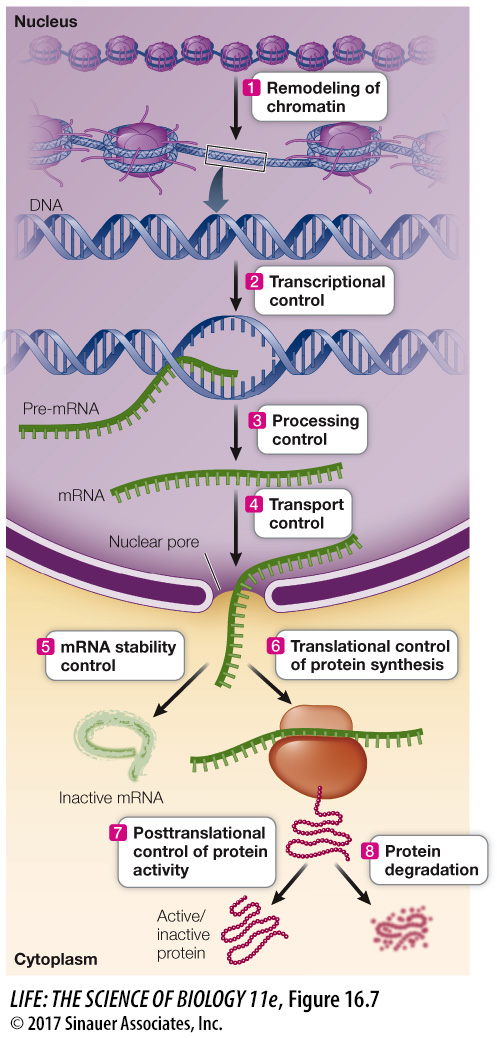key concept 16.2 Eukaryotic Gene Expression Is Regulated by Transcription Factors
342
For cell function in single-
In human pancreatic exocrine cells, the digestive enzyme procarboxypeptidase A makes up 7.6 percent of all the protein in the cell; in other cell types it is usually undetectable.
In human breast duct cells, alpha-
lactalbumin, a protein in breast milk, is made only late in pregnancy and during lactation. Alpha- lactalbumin is not made in any other cell types.
Clearly the expression of eukaryotic genes is regulated.
focus your learning
The rate of transcription of a eukaryotic gene depends on the combination of transcription factors and other proteins binding to regulatory sequences associated with the gene.
DNA binding proteins have certain structural motifs in common that are important in their binding function.
Eukaryotic genes whose expression is coordinated share the same transcription factors.
As in prokaryotes, gene expression in eukaryotes can be regulated at several different points in the process of transcribing and translating the gene into a protein (Figure 16.7). In this section we will describe the mechanisms that result in the selective transcription of specific genes. The mechanisms for regulating gene expression in eukaryotes have similar themes as in those of prokaryotes. Both types of cells use DNA–

Question
Q: In prokaryotes, transcription and translation are often coupled in time and space. But in eukaryotes they are separated. What are the advantages of the nucleus as a compartment?
An advantage of the nucleus is compartmentation—
Activity 16.1 Eukaryotic Gene Expression Control Points
www.Life11e.com/
| Prokaryotes | Eukaryotes | |
|---|---|---|
| Locations of functionally related genes | Often clustered in operons | Often distant from one another with separate promoters |
| RNA polymerases | One | Three: |
|
||
| Promoters and other regulatory sequences | Few | Many |
| Initiation of transcription | Binding of RNA polymerase to promoter | Binding of many proteins, including RNA polymerase |